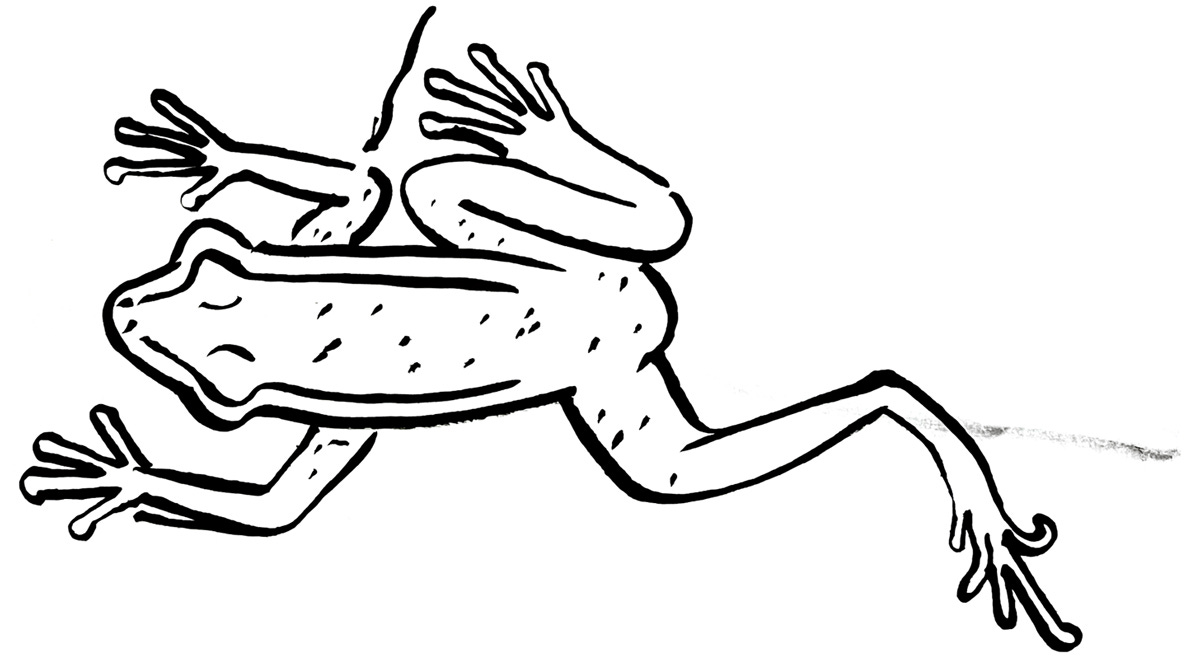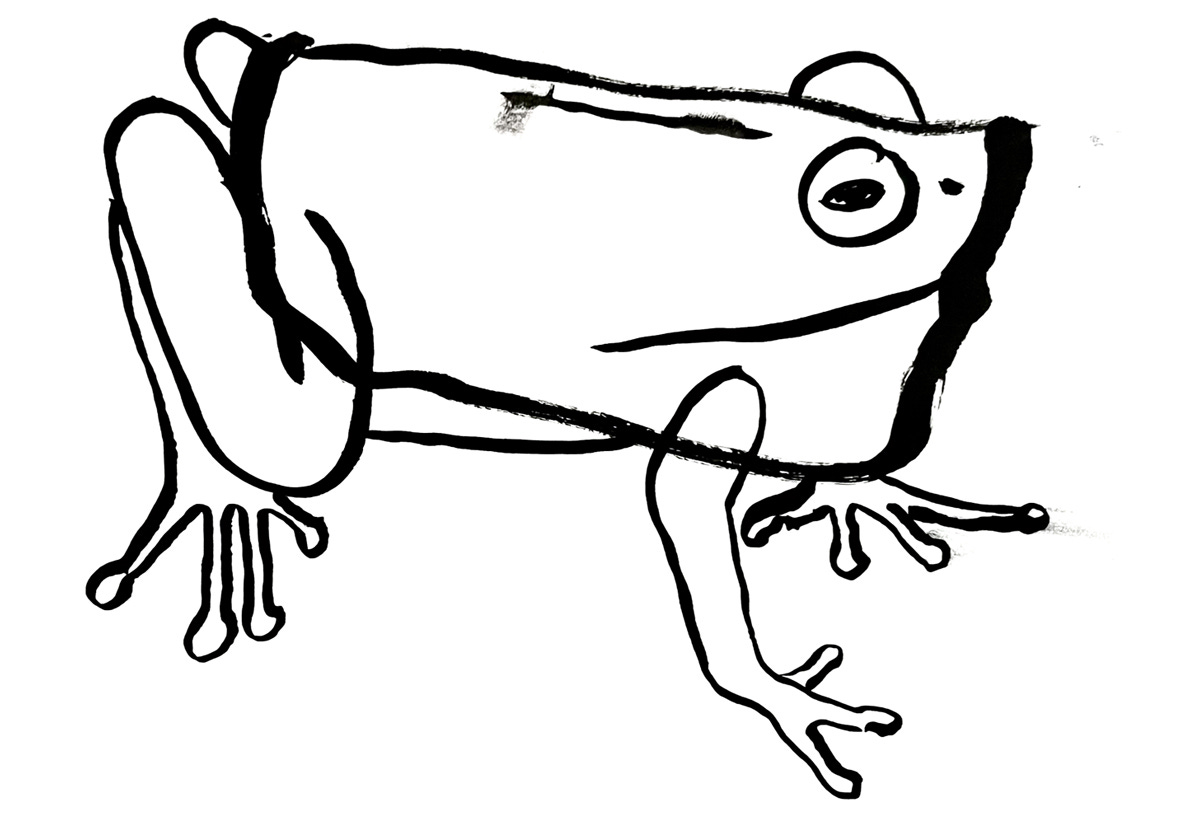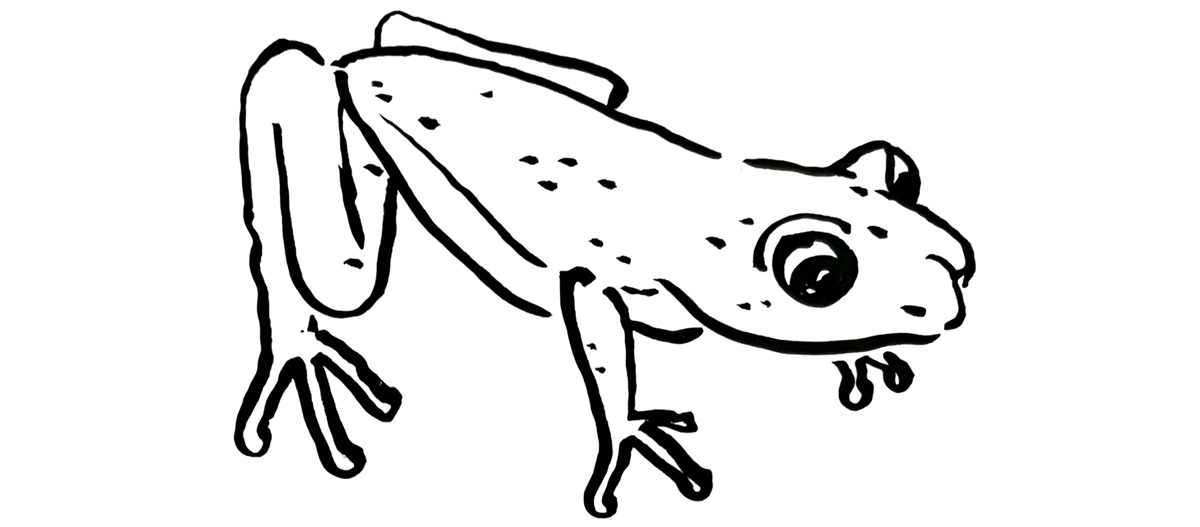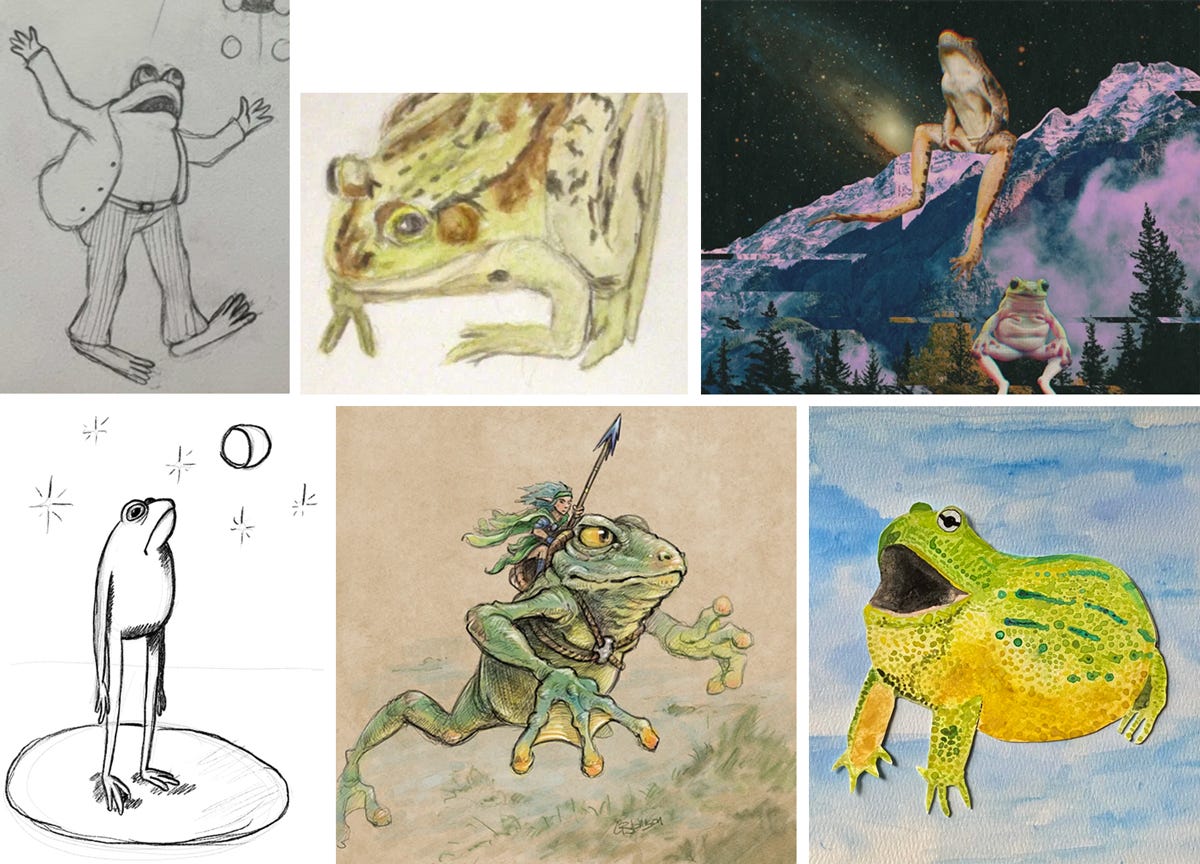If We’re Not Supposed to Draw, Why All The Frogs?
Inspired by the poet Gregory Orr (and also Rumi!)
This is the 14th installment in my series, The Art of Wisdom, a study of art from the world’s wisdom traditions my ongoing search for the connection between art and wisdom.

As an artist, it seems I’m always searching for connections. And I don’t mean networking or socializing. I mean connecting two ideas, two abstract concepts, by forcing them to sit with each other on a piece of paper. The dream is to effortlessly slide the two concepts together like puzzle pieces. But more often, it feels like stubbornly trying to jam one puzzle piece into another over and over until the cardboard edges start to fray, and then they really don’t fit together.
For the past two years, I’ve been (unknowingly at first, and then consciously) trying to connect two different concepts: art and spirituality. And by spirituality, I mean… well, I don’t really know what I mean. God, a higher power, the divine, the consciousness of the universe, the Supreme Being, being itself… trying to put a name to something like that feels like shoving together two puzzle pieces that almost fit (but don’t), but you can’t find the right piece anywhere, so you just leave those two together and hope no one notices the gaps.
Every time I write about art and spirituality, every time I attempt to tie the two together or find a common thread between them, I come a little closer. Not closer to an answer—I’ve since realized there are no answers in this conceptual space.
Maybe closer to a feeling, like the feeling you get when you finish a piece of art. In the creative space, there is no clear answer or definite signal for when a drawing is finished. You could go on creating a single piece of art, adding, removing, and editing for the rest of your life. Or you could, at some point, decide that it’s finished. That you’ve arrived at a point where it feels done.
I suppose that’s the feeling I’m searching for when trying to tie together my art and spirituality. The feeling that I may not have it all figured out, but at least I got these two little pieces to fit together. I don’t really expect to finish the whole puzzle, to empty the box and fit all the pieces together. If I had to bet, I’d say some of the pieces are lost under the couch and unreachable to us anyways. But I’m ok with that.

So why do it, then? Why spend so much time trying to tie together two disparate concepts that will, in all likelihood never be able to be tied together in a way that feels fully satisfying or complete? Why work on a problem that has no right answer?
I think the answer lies in the art I’ve seen, read, and heard from other artists. Through writers, poets, musicians, and illustrators, I’ve seen the possibilities. These artists have shown me that maybe what I’m striving for is less puzzle-ish, and more Play-doh-ish. Instead of thinking there’s one already existing puzzle connecting these two ideas in which I can fit all the pieces perfectly and objectively together, I should be thinking of it as two tubs of Play-doh in which it’s totally up to me how to combine them.
I can dump out these two concepts and squeeze them and mold them and feel them in my hands and eventually smush them together into one squishy, marbled ball of Play-Doh. Finishing a puzzle that I don’t even have all the pieces to is impossible. But smashing balls of Play-doh together? Well yeah, I can do that.
And I think that’s what these artists who create art that speaks to us have done. I recently came across the poem To Be Alive by the poet, Gregory Orr, which to me is a perfect example of him squishing these two balls of art and spirituality together in his own way:
“To Be Alive
To be alive: not just the carcass
but the spark.
That’s crudely put, but. . .
If we’re not supposed to dance,
why all this music?”–by Gregory Orr
It’s brilliant! It’s not an answer, but somehow it represents both concepts and marbles them together into one new, original thing. Sufjan Stevens too, repeatedly shows it’s possible. Gregory Orr and Sufjan Stevens have grabbed onto the thread between art and the divine, and I want to too!
I am, of course, not an internationally recognized and award-winning poet or musician. But you never know what somebody can do.

So anyways, that’s where I’m at as I continue this essay series on The Art of Wisdom. This series has evolved a lot over the past year, and so I’m changing the subtitle that I use in the introduction: “The Art of Wisdom, a study of art from the world’s wisdom traditions my ongoing search for the connection between art and wisdom.”
Who knows what smushy Play-doh creation will come out of it next?
Lastly, I’ll leave you with one more poem that connects art and the divine in a way that feels squishy-good to me, this one by the 13th-century Sufi mystic poet, Rumi:
“I know you're tired but come, this is the way...
In your light, I learn how to love.
In your beauty, how to make poems.
You dance inside my chest where no-one sees you,
but sometimes I do, and that sight becomes this art.”
–Rumi

We MightCouldDrawToday!
I’ve been loosening up and drawing more in my sketchbook these past few months and I credit that mostly to MCDT! It’s one of my favorite things in the whole world how Nick, Nikki, or I can give y’all a prompt, often just one word (like “Frogs”) and at the end of the week we have a whole set of completely different interpretations and beautiful pieces of artwork created from that random theme! It’s inspiring and amazing.
Echoing Gregory Orr, if we’re not supposed to draw, why all the amazing visual inspiration around us? Why. All. The. Frogs?
Thanks for reading!
<3,
Christine




